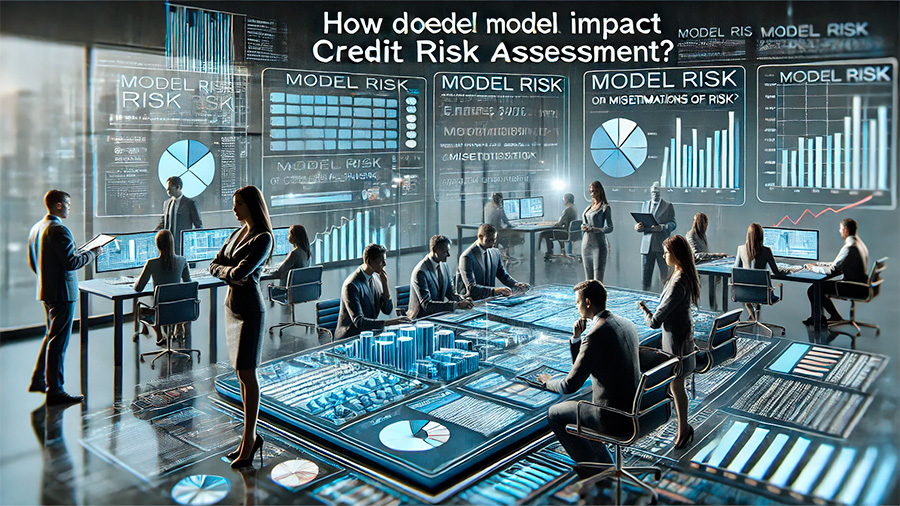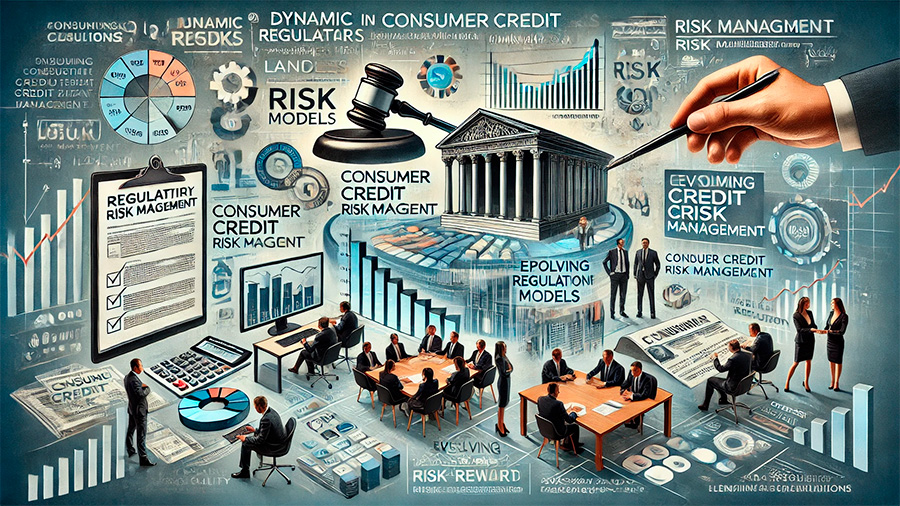Dealing with common pitfalls in consumer credit risk management requires attentiveness to several key areas. Firstly, data quality and availability play a crucial role. Issues like incomplete data, human errors, and data silos can lead to inaccurate risk assessments. Implementing robust data governance policies and regular reconciliation processes helps maintain data integrity. Advanced analytics and employee training further bolster data quality, ensuring more accurate credit evaluations.
Model risk presents another significant challenge in credit risk assessment. Inaccurate data or programming errors can lead to faulty borrower risk evaluations, impacting key lending decisions and potentially resulting in financial losses. Regularly validating and back-testing models, as well as keeping them updated with accurate data, is essential. Training staff on these processes ensures models remain reliable, thereby reducing financial exposure.
Lastly, economic and market fluctuations, along with unexpected events like pandemics, can stress-test even the best credit risk management systems. Proactively leveraging advanced analytics and AI for predictive modeling, conducting regular stress tests, and adopting an integrated, enterprise-wide approach help navigate these uncertainties. Implementing cloud-based solutions allows real-time decision-making, thus enabling financial institutions to adapt and maintain stability. Our team is here to support your journey in mastering these aspects of credit risk management.
What Are The Common Mistakes In Data Quality And Availability In Credit Risk Management?
Common mistakes in data quality and availability in credit risk management include:
- You might encounter incomplete data, which can come from human errors, system failures, data silos, or incompatible formats. To avoid this, you should ensure data integration, standardize formats, and perform regular data quality checks.
- Inconsistent data values or definitions across sources can disrupt your analysis. A lack of data governance or changes in data sources often causes this. You should establish data governance policies and implement reconciliation processes to maintain consistency.
- Invalid data, such as incorrect, irrelevant, or outdated entries, can skew your risk models. Regular data validation and updating processes are crucial to maintain data validity. Ensure you involve regular checks for any data entry errors, manipulations, or aging.
- Data duplication from multiple sources can confuse you and affect decision-making. Implement data deduplication processes to prevent redundancies.
- Human and machine errors, like incorrect data input or OCR inaccuracies, are common. Training employees in data management and using accurate data entry technologies can mitigate these issues.
- Outliers and errors in data points can distort your risk models. Use techniques like imputation or transformation to handle these anomalies without compromising model accuracy.
- Finally, to improve data quality, you should establish thorough data governance, ensure transparency and traceability, validate and audit data regularly, train your employees, and utilize robust data management systems.

How Does Model Risk Impact Credit Risk Assessment?
Model risk impacts credit risk assessment by causing potential inaccuracies in evaluating borrower risk. You rely on models to determine the probability of default (PD) and the potential loss given default (LGD). When these models fail or perform inadequately, you might face incorrect estimations that influence key lending decisions, leading to financial losses.
Here’s how model risk plays a crucial role:
- Inaccurate Data: Using incorrect or incomplete data can skew outputs, leading you to lend to high-risk borrowers or reject low-risk ones.
- Programming Errors: Errors in the model’s algorithm might cause significant miscalculations, such as underestimating the probability of default, leading to underpriced risk.
- Misinterpretation: Misunderstanding a model’s results or assumptions can lead to poor credit decisions, causing overconfidence in a borrower’s ability to repay.
- Operational Risk: Model risk is part of operational risk, affecting your firm by potentially leading to financial loss, reputational damage, and compliance issues if models fail to correctly predict or measure risk.
You can manage model risk by:
- Regularly validating and back-testing models.
- Updating models with accurate, real-time data.
- Training staff on model assumptions and limitations.
- Implementing a robust model risk management framework to identify, measure, and mitigate risks.
In closing, addressing model risk enhances the reliability of your credit risk assessments, leading to more informed lending decisions and reduced financial exposure.

What Are The Regulatory Challenges In Consumer Credit Risk Management?
One major regulatory challenge in consumer credit risk management is staying compliant with constantly changing regulations. You must continually update your processes to meet evolving requirements from authorities like the Dodd-Frank Act. This means implementing robust risk models, ensuring transparency, and allocating significant resources.
Maintaining data quality and integrity is also crucial yet challenging. Without reliable and accurate data, your risk assessment process can be compromised, leading to potential financial losses. Many banks struggle with accessing the high-quality data essential for making informed credit decisions.
Balancing risk and reward in lending is another hurdle. It’s tough to set interest rates and terms that attract borrowers while mitigating risks. You need sophisticated data analytics and risk modeling tools to forecast borrower behavior and default probabilities accurately.
Finding and retaining skilled personnel for credit risk management adds to the challenge. Expertise in statistical modeling, data analysis, and risk assessment is essential but not always readily available. Collaborating with managed service providers can help, but it’s not a universal solution.
To tackle these challenges, you should:
- Enhance your data management practices.
- Stay updated with regulatory changes.
- Invest in technology like AI for better risk modeling and data analysis.
Overall, staying compliant with regulations, maintaining data integrity, balancing risk and reward, and finding skilled personnel are essential in managing consumer credit risk effectively.
How Can Financial Institutions Balance Risk And Reward In Setting Loan Terms?
Financial institutions balance risk and reward when setting loan terms by analyzing and managing several key factors. You need to assess the borrower’s creditworthiness, including their credit history, income, existing debt levels, and financial statements. This helps estimate their ability to repay the loan and set appropriate interest rates and loan conditions.
Higher interest rates can be charged to borrowers with lower credit scores to compensate for higher risk, while more favorable rates are offered to those with strong financial profiles. This ensures the interest earned aligns with the risk taken. Tailoring loan terms such as repayment schedules, loan amounts, and collateral requirements based on the borrower’s risk profile is also crucial. You can offer flexible repayment terms to provide protection against default and manageable payment options for borrowers.
You should diversify your loan portfolio to spread risk across various borrowers, industries, and loan types, which helps avoid significant losses from any single default. Additionally, using risk management tools like hedging, insurance, and maintaining sufficient liquidity helps mitigate potential losses and ensure the institution’s stability.
As a final point, by continuously monitoring these factors, you can effectively balance profitability with the need to minimize potential losses, ensuring a stable and rewarding financial operation.
Why Is An Integrated Approach Important In Credit Risk Management?
An integrated approach in credit risk management is crucial because it gives you a complete view of your credit exposures and vulnerabilities. You can identify potential risks early, streamline processes, and improve risk assessment accuracy.
By centralizing all risk activities, you ensure compliance with regulations and show a strong commitment to risk management. This approach promotes better decision-making and efficiency across your organization, making it easier to proactively manage and mitigate risks.
To sum up, embracing an integrated approach helps you manage risks effectively, aligning them seamlessly with your daily operations and long-term strategy, ensuring stability and success in a complex financial environment.

